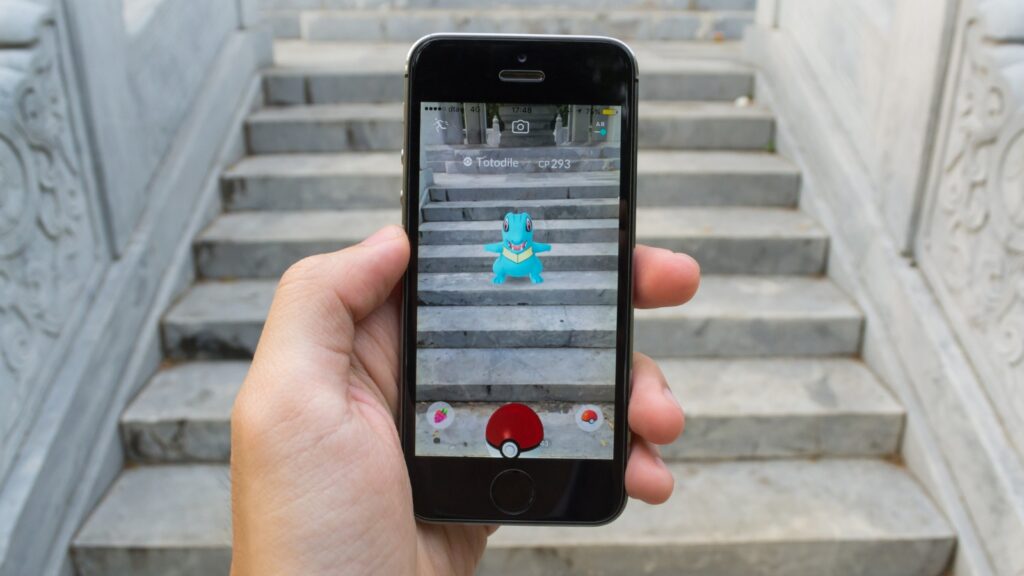iStockphoto / Wachiwit
Chances are you or someone you know has downloaded and played Niantic’s Pokémon Go at some point because the game has been downloaded over 1 billion times since it was released back in 2016. Now it has been revealed by the game’s manufacturer, Niantic, that players have been unknowingly helping to trainer their AI model (an LGM) to navigate the world in natural ways and sadly, anyone who played could have made a dystopian robot uprising easier based on what was revealed.
In a November 12th blog post titled ‘Building a Large Geospatial Model to Achieve Spatial Intelligence,’ Niantic (maker of Pokémon Go) explained what a Large Geospatial Model (LGM) is and what they’ve been doing over the past 5 years. For Futurists and Alarmists alike, various excerpts from the blog post could raise red flags. For instance, they write:
“As humans, we have “spatial understanding” that means we can fill in these details based on countless similar scenes we’ve encountered before. But for machines, this task is extraordinarily difficult. Even the most advanced AI models today struggle to visualize and infer missing parts of a scene, or to imagine a place from a new angle. This is about to change: Spatial intelligence is the next frontier of AI models.”
‘For machines this is extraordinarily difficult…this is about to change.’ They go on to write:
“As part of Niantic’s Visual Positioning System (VPS), we have trained more than 50 million neural networks, with more than 150 trillion parameters, enabling operation in over a million locations. In our vision for a Large Geospatial Model (LGM), each of these local networks would contribute to a global large model, implementing a shared understanding of geographic locations, and comprehending places yet to be fully scanned.”

iStockphoto
Oh cool… 50 million neural networks have been trained on over 150 trillion parameters. All so that they can “enable computers not only to perceive and understand physical spaces, but also to interact with them in new ways, forming a critical component of AR glasses and fields beyond, including robotics, content creation and autonomous systems.”
Go ahead and read that again. It is essentially saying that Pokémon Go trainers have been helping Niantic train robots to effectively navigate the world in over a million locations, to fully understand/perceive physical spaces and to interact with them in new ways. They also specifically call out ‘robotics’ as an area were this could be implemented.
I came across this story not form Niantic’s blog post but from an article on 404 Media where the author explains this as “By training an AI model on millions of geolocated images from around the world, the model will be able to predict its immediate environment in the same way an LLM is able to produce coherent and convincing sentences by statistically determining what word is likely to follow another.”
Very cool. Robots predicting physical spaces and being able to move faster than humans and think for themselves. That’s exactly what we want in the world, right? That article specifically calls out this passage from the Niantic blog post for how dystopian this all sounds:
“Imagine yourself standing behind a church. Let us assume the closest local model has seen only the front entrance of that church, and thus, it will not be able to tell you where you are. The model has never seen the back of that building. But on a global scale, we have seen a lot of churches, thousands of them, all captured by their respective local models at other places worldwide. No church is the same, but many share common characteristics. An LGM is a way to access that distributed knowledge.”
If the robots are reading this… I, for one, welcome our robot overlords in the future…
That said, I don’t love the thought of a robot predicting what the layout of a building is even if it’s never seen that building. It doesn’t take a genius to see how that technology could be abused.
According to 404 Media, Niantic did not respond when they reached out for a comment on whether there are any “limitations on who and how it would allow people to leverage this data” being gathered through Pokémon Go and Ingress, their other popular game.
At the very least, this has a LOT of people wondering how their personal data is being used. Nobody reads the Terms of Service when downloading apps. Not now, not ever… Maybe we should be?

